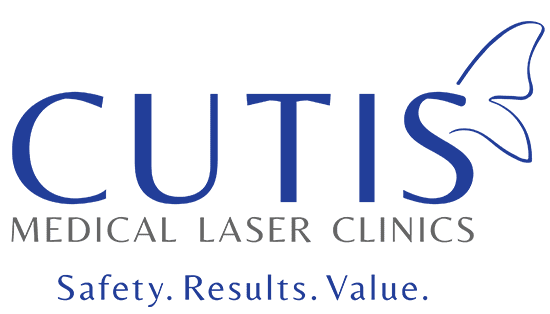If you have long been dealing with unwanted body hair, you are probably annoyed when they grow back and it’s time to remove them again. Whether it’s days, weeks, or even months, it can be frustrating and time-consuming to remove those pesky hairs all over again, especially if you’re looking to have silky, smooth skin.

In such cases, it only makes it important to be acquainted with the different hair removal methods and the results they can offer. In this article, we’re listing the various hair removal methods and how long you can expect their results to last.
Shaving
Simple, quick, and easy to do, shaving works by using a razor (manual or electric) that cuts near the surface of the skin. This method doesn’t actually remove the hair, but only cuts or trims it. And while it doesn’t change the color and thickness of the hair, it can make the hair look thicker and feel stiffer because of the blunt end.
With shaving, the results are short-lived, about two to three days. In some cases, the hair can also grow after a day or even several hours. This method doesn’t last long, so you’ll have to do it often if you wish to remain hair-free. You also need to use a fresh blade and lubrication like shaving cream for optimal results.
Check our previous post to find out why it’s time to rethink shaving.
Waxing
Instead of cutting or trimming the hairs, waxing removes the hair from the root. This involves the use of wax that is covered by cloth or paper strips, pulled off in the opposite direction of the hair growth. One main issue with waxing is that while it can give you silky, smooth skin, it can be painful and lead to irritation, scars, and discoloration when done incorrectly.
Compared to shaving, waxing lasts longer, about four to six weeks. There is also the benefit of the hair decreasing and the effects lasting longer with continuous waxing. Just do take note that the hair needs to be at least a quarter-inch for the wax to grab the hair. It is also advisable to have a professional perform the method for safe and effective hair removal.
Hair removal or depilatory cream
This method uses chemicals in the form of cream or any liquid to dissolve and break down hair keratin from the skin surface. Hair removal creams weaken the follicles, allowing you to easily wipe and wash the broken-down hairs. These are relatively painless, but the harsh and strong chemicals may cause allergic reactions or irritation, especially if you leave the product longer than it is intended.
With depilatory creams, the results are similar to shaving, about two to three days. And as the method only removes the visible hair (not from the follicle itself), you can still see some shadow below the skin. It is also worth noting that these creams may not be effective on certain types of hair like coarse and darker hairs.
Electrolysis
As the only US FDA-approved method for permanent hair removal, electrolysis destroys the growth cells in the follicles. It involves inserting a probe or a very fine needle into the targeted follicle beneath the surface of the skin. Then, an electrical current passes through the probe to kill the root and remove hair.
As electrolysis permanently damages the follicle, the hair won’t grow back. Permanent hair removal, however, is not guaranteed for everyone. Factors like hormonal fluctuations and the type of electrolysis used can affect the outcome. You also need multiple sessions to achieve optimal results.
Sugaring
As its name suggests, this method uses sugar with other natural ingredients to create a paste. This is then applied against the direction of the hair growth and removed in the direction of the hair with quick pulls. Sugaring doesn’t adhere to the surface of the skin; it only removes hair, reducing the risk of irritation.
This method removes the hair follicles and lasts about six weeks. And with constant sugaring, you can expect your hair to grow back thinner over time. You can also try sugaring at home, but keep in mind that it can be difficult for a beginner. Seeing a professional can give you much better results.
Plucking or tweezing
Mostly reserved for facial hair, plucking removes hair from the root using a pair of tweezers. It pulls hair one hair at a time, so it cannot be used on large areas like the legs. Tweezing works perfectly for keeping your eyebrows neat or removing pesky strands after waxing or shaving.
Plucking removes hair from the root, so it lasts longer, between three and six weeks. But then again, the results can still vary depending on your hair type and its growth rate. Just be careful when you do it, as this method can be painful, as well as break the hair instead of pulling it out. It can also cause scarring, irritation, and ingrown hair.
Threading
This quick hair removal method traps and rips the hair out in the same way as plucking. Threading uses a thin cotton thread that is doubled and twisted and quickly rolled to pull out the hair. It is fast and has no risks of burn or swelling, but it can only be used on smaller areas such as the eyebrow, upper lip, and sides of the face.
As it plucks the hair out of the follicle, it lasts longer, about six weeks. Just do take note that there are cases where it can be painful, as several hairs are being pulled out at the same time. It should also be done properly to avoid hair breakage that can lead to ingrown hairs and unevenness.
Laser hair removal and other light-based methods
With laser and other light-based hair removal methods, the hair follicles are heated and targeted to inhibit future hair growth. These involve the use of a device that emits light, which is converted into heat, killing and destroying hair follicles. At Cutis, we have a range of laser and light-based devices that can deliver permanent hair reduction results.
- Laser hair removal (Cutera CoolGlide) – targets hundreds of hair follicles in a short period. It can treat all skin types and tones, including dark and tanned skin.
- ProWave LX – uses high peak powers with a shorter pulse. It is effective in treating fine and light hairs, as well as different skin types.
- SHR (Super Hair Removal) – delivers gentle energy pulses that target the pigment and stem cells responsible for hair growth. It can treat all skin and hair types, particularly Asian ones.
- LHE (Touch Elite with LHE) – uses light and thermal energy to target and damage the follicles. It can treat different skin types with no damage to the skin during the procedure.
Laser and similar devices provide long-term hair reduction. These methods remove hair in the anagen or active growth stage, which is why you’ll need multiple sessions for optimal results. Laser can target about 80 to 90% of your hair and any left behind should be fine and light. Find out more about the science of laser hair removal in our previous post.
It is also important to remember that even if the follicles are damaged, some eventually heal. This can result in regrowth, but with much thinner and finer hair as the pigment is removed during the procedure. Other factors like hormonal changes and certain conditions can also cause new hair growth.
Further reading: How Hair Growth Cycles Affect Laser Hair Removal
If you’ve been looking for a long-term solution to unwanted hair, don’t hesitate to consider laser hair removal and similar methods. Contact Cutis Medical Laser Clinics in Singapore today and schedule a consultation with our aesthetic doctor to find out which procedure is right for you.
- If you would like to be an informed patient, please contact us at +65-6801-4000 or
hello@cutislaserclinics.com. - Cutis Medical Laser Clinics, 9 Scotts Road Pacific Plaza, Scotts Medical Center #08-07, Singapore – 228210
+65-6801-4000 - hello@cutislaserclinics.com
